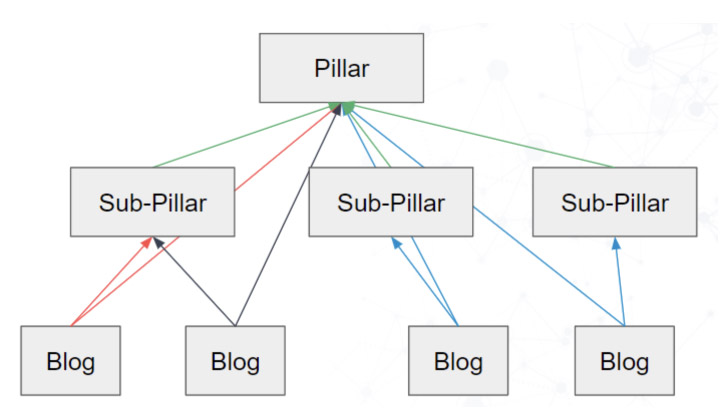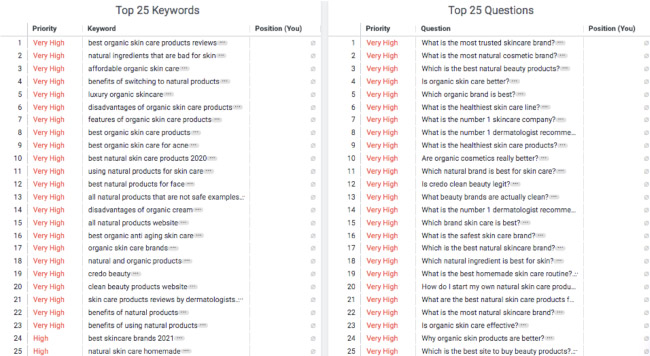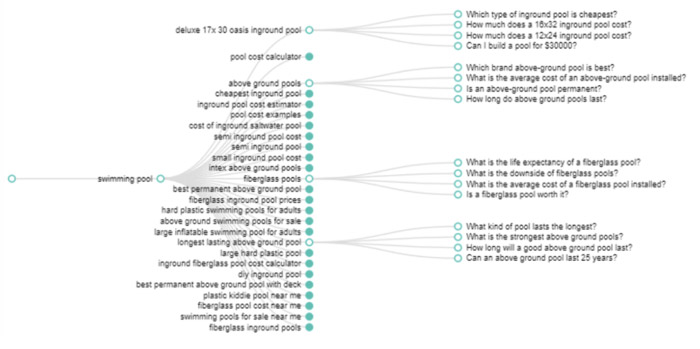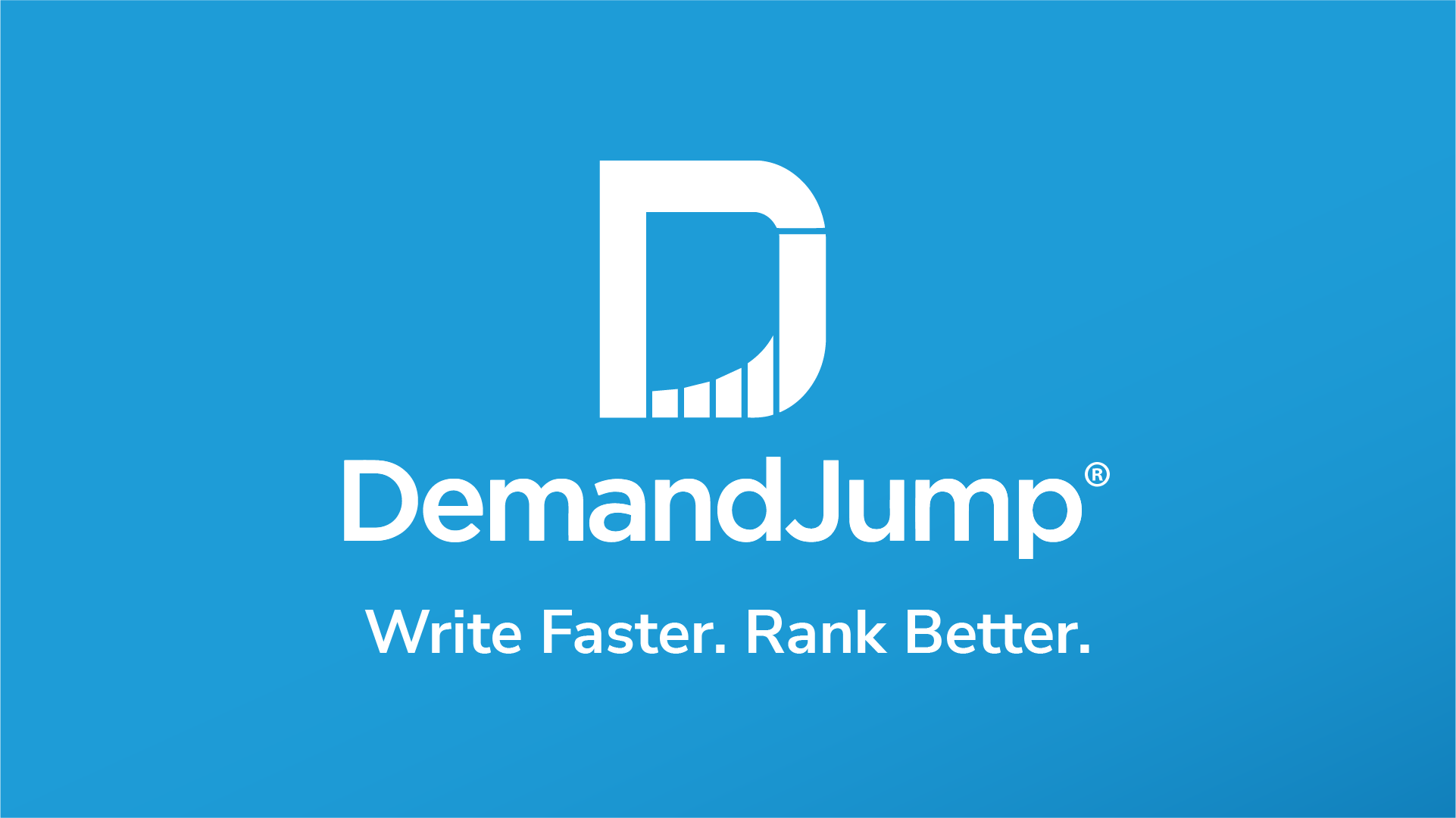There is a statistic we like to share that stings a little, but it’s important knowledge to have. It’s this: 90% of active web pages get zero web traffic from Google. Yes, 90%, and yes, we’re certain. The truth hurts, right? This is the harsh reality of millions of companies clamoring for a top spot.
 How do you stand out in this vast sea of content, most of which is never seen? Our team at DemandJump has found a solution in the SEO pillar strategy. Through innovative keyword research and pillar page SEO planning, our customers have found themselves showing up on the first pages of Google searches time and time again.
How do you stand out in this vast sea of content, most of which is never seen? Our team at DemandJump has found a solution in the SEO pillar strategy. Through innovative keyword research and pillar page SEO planning, our customers have found themselves showing up on the first pages of Google searches time and time again.
Before going down a “pillar page meaning” search engine wormhole, let us share the key points of what makes a pillar page and how to design a good one.
What Is a Pillar Page?
A pillar page is the foundation of a set of content created to answer your audience’s most pressing questions. People have begun engaging with search engines in more complicated ways, asking full-blown questions instead of inserting a few keywords.
As more and more people come to the cyber table with questions, companies that have dedicated time to expertly answering those questions find it easy to turn the questioners into customers. SEO pillar marketing is an efficient way to do this while also pushing your answers to the top of search engine results. Using this strategy, you could see results like a 170% increase in total revenue or a 184% increase in click-through rates.
Along with the pillar page comes content clusters. The pillar page is the foundation of this content strategy, and the cluster pages all stem from the pillar page. It’s this interconnectedness that gets your website to page one visibility, while your content pulls customers in. Let’s discuss how pillar pages and content clusters work together and what a pillar page can look like.
What Are Pillar and Cluster Pages?
Imagine a network of expertly written pages linked together in a methodical way on your company’s website. These pillars, sub-pillars, and supporting blogs create a content cluster. The pillar is a longer piece of content (around 3,000 words) that covers a broad topic. Sub-pillars (1,500 to 2,000 words) cover a sub-topic within the pillar topic and supporting blogs (around 750 words) explore details of the sub-pillar sub-topics.

Learning the architecture of this successful content strategy is key to understanding pillar page design. If you choose too narrow of a topic for your pillar, you won’t be able to branch out into the sub-pillars and supporting blogs. On the other hand, if your pillar topic is too widespread, it can be difficult to pick quality supporting topics. We are quite familiar with this challenge at DemandJump, and we love helping our customers through this complex part of the planning stage.
Now, what exactly should this pillar page look like? Pillar page design will vary for every business, but one design option is the resource pillar page.
What Is a Resource Pillar Page?
A resource pillar page is a curated collection of resources that your audience would benefit from utilizing. Many great pillar content examples are resource pillar pages. A primary goal of a resource pillar page is to be bookmarked as a helpful tool for someone to revisit time and time again.
To demonstrate, consider these hypothetical resource pillar page examples. One idea would be to list a variety of resources that would be handy to a potential customer with a brief explanation of how they could be useful. You could also create an educational resource pillar page with internal links to other pages on your company’s website listed in an order that lends itself to easy learning and exploration.
With those examples in mind, it’s important to note a resource page can be a pillar page, but a pillar page does not always have to be a resource page. Let’s examine how traditional content pillar pages can differ from resource pillar pages.
What Are the Differences Between a Resource Pillar Page and a Content Pillar Page?
While a resource pillar page focuses on…well…resources, a content pillar page can be designed in a wider variety of ways. Both pillar types will have:
- Solutions to pain points your audience commonly feels
- An evergreen quality, meaning it will still be relevant one, two, or even five years from now
- Links to some of its sub-pillars and supporting blogs
- A highly-trafficked, easily-accessed location on your business’s website
A content pillar page will spend more time answering the most asked questions about a topic, and a resource pillar page will provide tools to overcome challenges associated with those questions. Creating either design can be a straightforward process once you have grasped pillar page basics.
For designing both pillar page types, the content should flow and have visual appeal. Lengthy paragraphs and run-on sentences are quick routes to a poorly-performing pillar page. Adding lists throughout a pillar page and keeping paragraphs short can make the 3,000-word length feel easily digestible, drawing readers in to learn more.
Another factor to consider in the design process is how a pillar page functions. You can’t build a car engine without knowledge of how pistons and other inner engine mechanisms work. Similarly, you can’t create a good pillar page without understanding how one works.
How Do Pillar Pages Work?
As we find ourselves saying often at DemandJump, good pillar content is a mixture of art and science. The science is what gets your content to a place of visibility for potential customers; the art is what makes them stay and trust your expertise.
How do these content clusters continue to drive web pages to the top of Google searches? It has to do with the structure of hyperlinking content and what that content is saying. Your sub-pillars should link to the pillar, and supporting blogs should link up to the pillar and sub-pillar page. The linking aspect of this strategy is as much an integral part of pillar page design as the content itself.
For the content side, search engine algorithms are set to find subject matter experts. These experts usually demonstrate their wisdom by continuously putting out a significant amount of quality content that answers commonly asked questions. By combining this quality content with keywords and the pillar hyperlinking structure, you have the perfect recipe for achieving a page one ranking.
Although, having a recipe and successfully following that recipe are two different things. We’ve all forgotten a vital ingredient or left a dish in the oven too long. Following the recipe for creating a good pillar page can be just as tricky. So, let’s jump into how you actually write a pillar page.
Successful Pillar Page Design: Plan, Then Write
Writing pillar page content is a multi-step process with many aspects that lead to successful outcomes. The main steps of creating a pillar page will include:
- Researching keywords for a broad topic you want to address
- Picking a central topic from those keywords for your pillar page
- Determining sub-pillar and supporting blog topics, again based on keywords as well as your pillar page
- Preparing an outline for your pillar content
- Writing your pillar page with appropriate internal and external linking
- Publishing your pillar page
- Continuing to review your pillar page as time passes to ensure it remains relevant and up-to-date
As you can see, the steps at the beginning of the list are more in the planning stage. Taking the time to design a comprehensive pillar plan is vital to the success of this strategy. Read on to find out why that is.
How Do You Plan a Pillar Page?
Researching keywords, picking content topics, and creating an outline are the main aspects of pillar planning. Pretend, for a moment, that you are an organic beauty supplier. If your company decides to utilize our platform at DemandJump to create your SEO pillar strategy, you can generate a topic content summary for “organic beauty supplies.” The summary will pull information from your website and other competitors to determine the top keywords and questions on the subject of organic beauty supplies.
Part of this summary report will include top keywords and questions. Here’s what this section may look like for organic beauty supplies:

After studying this report, your company might choose “luxury organic skincare” as a pillar page topic, as it is broad and could branch out in many different directions. “Features of organic skin care products” might work for a sub-pillar, and perhaps the question “Are organic cosmetics really better?” could function as a supporting blog within that sub-pillar. You’ll want at least three sub-pillar topics branching from the singular pillar, and then at least three supporting blogs branching from each sub-pillar.
Once you’ve determined all the topics of your content cluster, you can move to the creation phase of designing your pillar page.
How to Create a Pillar Page
This is where your creative and artistic side can shine through. And if you’re not confident with your writing skills, no worries, as you can easily outsource the writing part. At DemandJump, we have a content writing team that is available to assist our customers with this portion of pillar marketing strategy. When we asked them how they approach writing a pillar page, here are some of the responses we received:
- “Start with a good outline. Keywords and questions usually lend themselves to an obvious outline with a comfortable flow. Once you have your outline, the content writes itself.”
- “Answer the questions. This seems basic, but sometimes I can get too caught up in the creativity and forget to answer the questions. While you should be creative to some extent, if you neglect to answer the questions satisfactorily, the science aspect that gets you on page one won’t work.”
- “Put your keywords and questions in your headings. This gives them visibility to search engine algorithms, more so than if you only include them in your body text.”
- “Including interesting or surprising statistics is an excellent way to boost credibility while also adding an engaging element for your audience.”
 (DemandJump's automated pillar page strategy tool.)
(DemandJump's automated pillar page strategy tool.)
So, How Do You Write Pillar Page Content?
With this advice from the experts in mind, here is our simple checklist of elements that go into a good pillar page:
- Has a topic that is broad enough for branching out with sub-pillars and supporting blogs
- Contains approximately 3,000 words
- Section headers include keywords and questions
- Uses one or two interesting and supporting statistics (and links to reliable sources for those facts)
- Includes at least 15-20 keywords and questions
- Satisfactorily answers the top questions on the subject
- Easily skimmable for readers looking for quick answers
- Ends with a call to action, like the section you’re about to read next
Jump to Page One with DemandJump!
Whether your head is spinning with all of this information on pillar page design, or you're eager to start researching your own pillar page topics, DemandJump can help. Our team is full of expertise that only comes with years of experience and a wealth of accumulated knowledge. If you’re searching for solutions to content marketing, SEO keyword research, marketing attribution, consumer insights, or anything beyond and in between, DemandJump has the answers.
With all of our customers consistently seeing positive outcomes, our trust in our services is so strong that we are letting people try it for free! We can’t wait to tell you all about the results you can expect after partnering with DemandJump.











 How do you stand out in this vast sea of content, most of which is never seen? Our team at DemandJump has found a solution in the
How do you stand out in this vast sea of content, most of which is never seen? Our team at DemandJump has found a solution in the 

 (DemandJump's automated pillar page strategy tool.)
(DemandJump's automated pillar page strategy tool.)